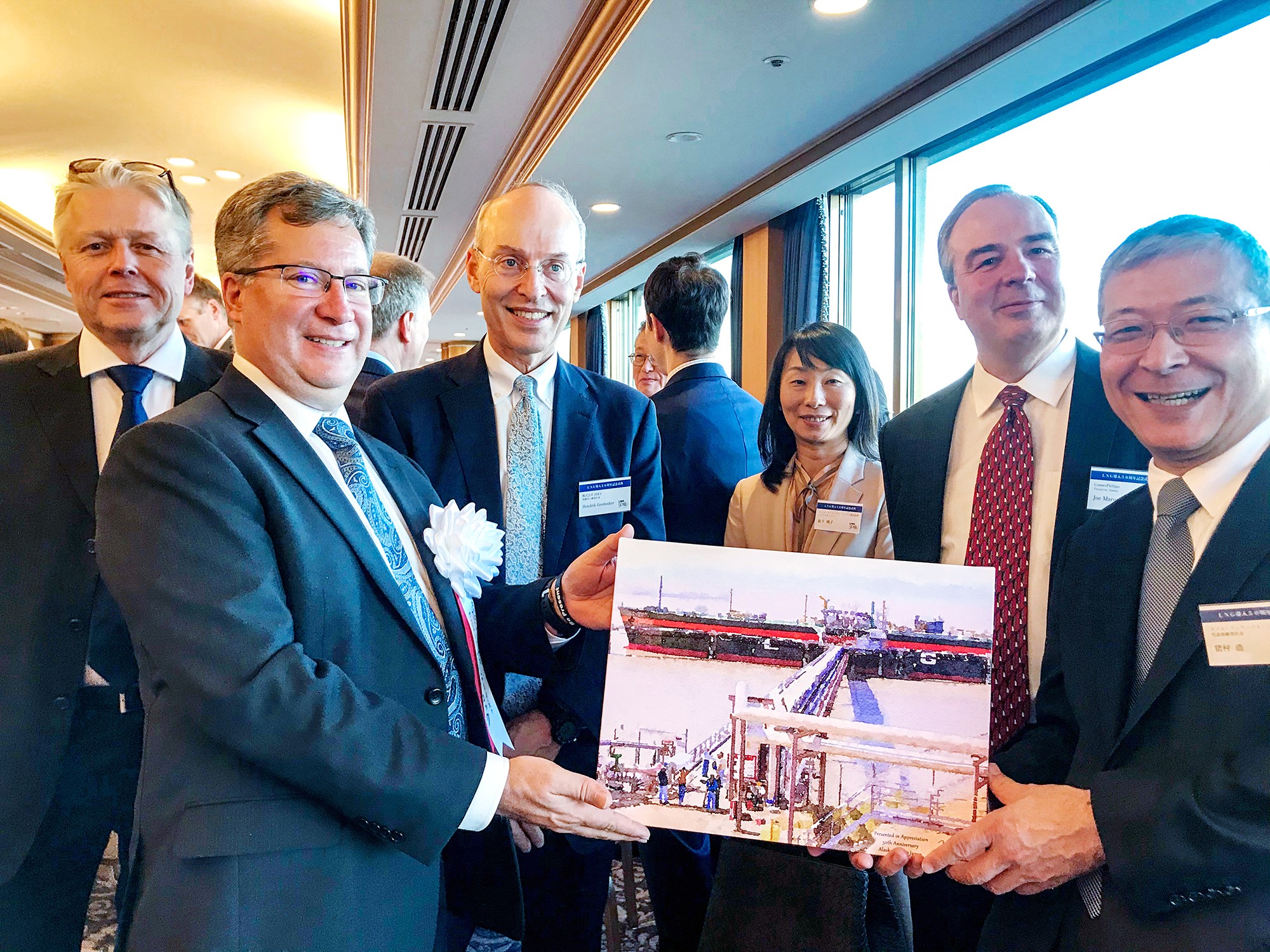
On Oct. 26, 1969, the new liquefied natural gas (LNG) tanker Polar Alaska departed the onloading terminal at Phillips Petroleum’s Kenai, Alaska LNG plant and headed west toward Japan, carrying the first-ever cargo of LNG to that country. The ship’s arrival at a receiving terminal in Tokyo Bay marked the beginning of a long and fruitful relationship between the company and its Japanese customers — a relationship that was celebrated in Japan by Bill Bullock, president, Asia Pacific & Middle East.
“All of us at ConocoPhillips take great satisfaction in pioneering the export of LNG to Japan,” said Bullock. “It was our predecessors’ hard work, creativity and courage that give us the privilege of celebrating this moment.”
In the early ‘60s, companies exploring for oil in Alaska’s northern Cook Inlet — including Phillips — discovered a large quantity of natural gas for which there was no market in Alaska. The discovery of large gas volumes prompted Phillips to explore the market for LNG in Japan.
With no natural resources of its own and air quality issues associated with the use of coal, the nation needed a reliable source of fuel for electricity generation, heating and industrial use. LNG seemed a natural replacement because it could be safely and economically transported by ship, and the Tokyo Gas Company, later joined by Tokyo Electric (now JERA), was receptive.
 At a celebration commemorating the 50th anniversary of LNG in Japan, from left: Professor Takeo Kikkawa, Tokyo University of Science; Bill Bullock, president, ConocoPhillips Asia Pacific & Middle East; Takehiko Kakiuchi, president, Mitsubishi Corporation; Toshihiro Sano, chairman, JERA; Takashi Uchida, president, Tokyo Gas; Deputy Minister of Economy, Trade and Industry Yohei Matsumoto; Joseph Young, charge d’affaires. U.S. Embassy; Alaska Governor Michael Dunleavy; Masanobu Nakajima, deputy governor, Kanagawa Prefecture; and Toshihide Hirahara, deputy mayor, Yokohama City
At a celebration commemorating the 50th anniversary of LNG in Japan, from left: Professor Takeo Kikkawa, Tokyo University of Science; Bill Bullock, president, ConocoPhillips Asia Pacific & Middle East; Takehiko Kakiuchi, president, Mitsubishi Corporation; Toshihiro Sano, chairman, JERA; Takashi Uchida, president, Tokyo Gas; Deputy Minister of Economy, Trade and Industry Yohei Matsumoto; Joseph Young, charge d’affaires. U.S. Embassy; Alaska Governor Michael Dunleavy; Masanobu Nakajima, deputy governor, Kanagawa Prefecture; and Toshihide Hirahara, deputy mayor, Yokohama City
The Optimized Cascade process it patented back then became the basis for ConocoPhillips’ global LNG success with ongoing developments and patents. Today ConocoPhillips delivers approximately 4 million metric tonnes per annum of LNG to Japan from its facilities in Australia.
 Admiring a photo of an LNG tanker at the Kenai terminal are (from left) Birger Balteskard, manager, Global LNG Marketing & London Office; Bill Bullock; Hendrik Gordenker, senior corporate vice president, JERA; Akiko Matsushita, director, LNG Commercial Japan; Joe Marushack, president, ConocoPhillips Alaska; and Hiroshi Imura, manager, Japan LNG
Admiring a photo of an LNG tanker at the Kenai terminal are (from left) Birger Balteskard, manager, Global LNG Marketing & London Office; Bill Bullock; Hendrik Gordenker, senior corporate vice president, JERA; Akiko Matsushita, director, LNG Commercial Japan; Joe Marushack, president, ConocoPhillips Alaska; and Hiroshi Imura, manager, Japan LNG
